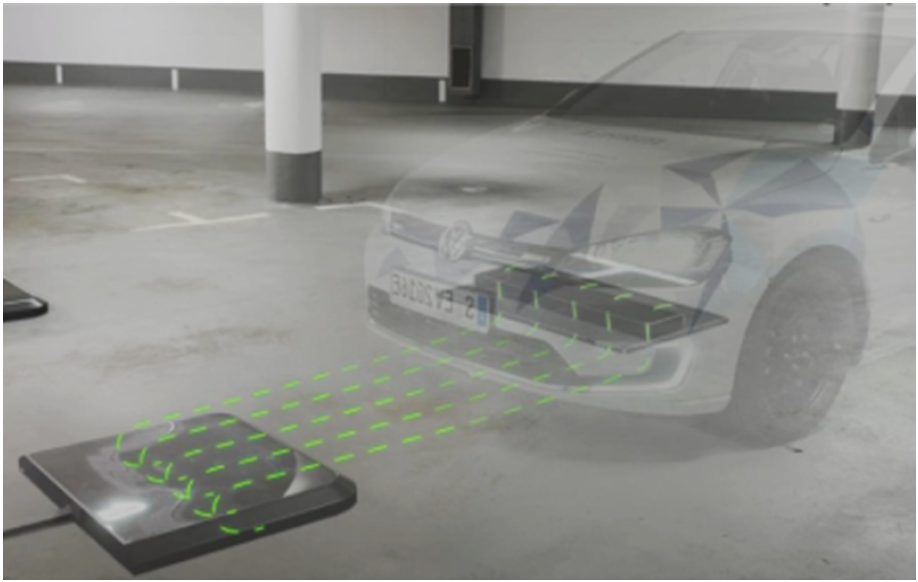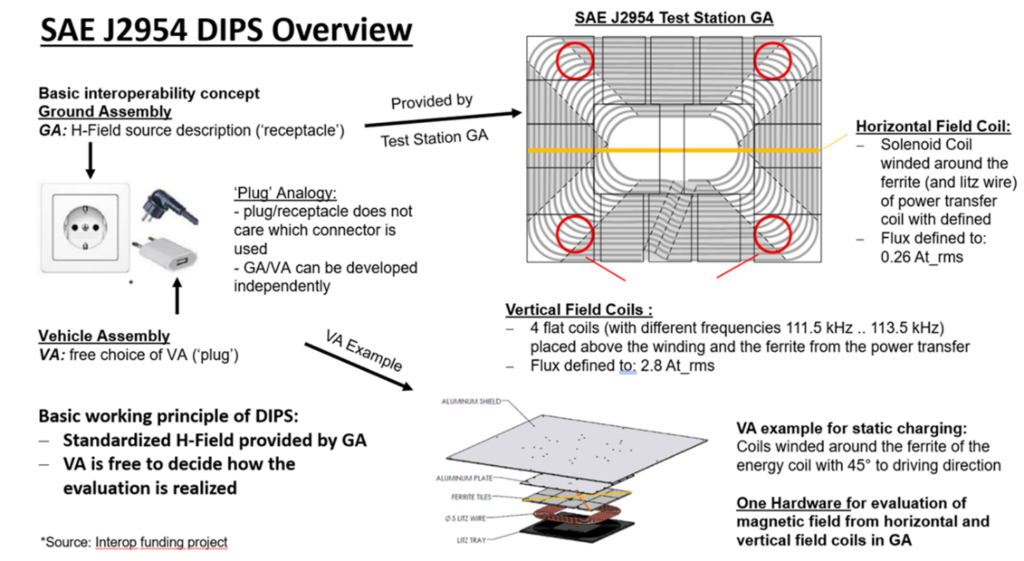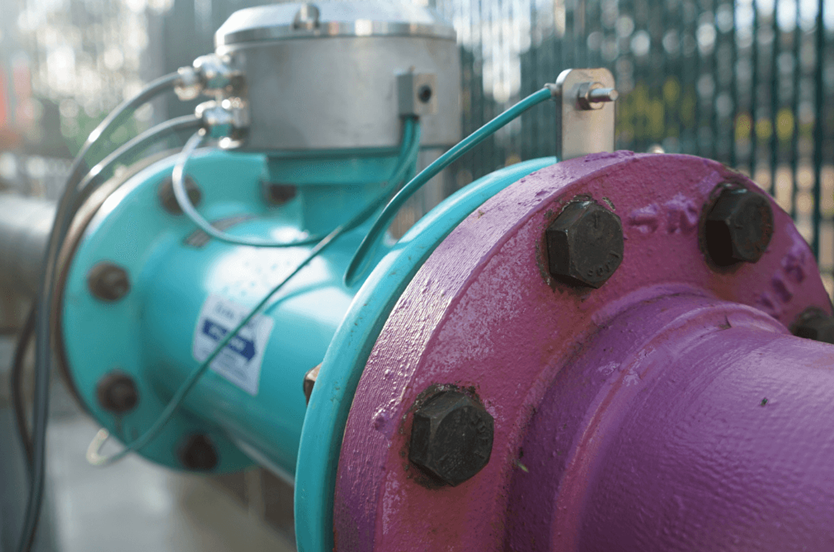
Now with a standard methodology set by SAE International for wireless inductive charging of electric vehicles, the technology is positioned to accelerate toward mainstream adoption – creating big wins for Mahle and Electreon who collaborated on the system chosen. The move also underscores further proliferation of magnetic technology in future automotive systems. Until now, formalizing universal standards for interoperable, safe, automated wireless charging has been seen as a major barrier on the path to scalable wireless EV charging deployments.
After a lengthy review process, the automotive engineering society’s Wireless Power Transfer & Alignment Taskforce settled upon Differential Inductive Positioning System (DIPS) as the technology alignment methodology for the SAE J2954 standard. The taskforce, consisting of OEMs, Tier 1s and wireless charging suppliers, were surveyed to determine minimum common methods for alignment, enabling a fully automatic, all-weather, wireless interoperable charging solution for electric vehicles.
“EV charging should be as simple as parking in the right spot and walking away, SAE J2954 Standard enables this,” stated Jesse Schneider, chair of the SAE Wireless Power Transfer Task Force, who is CEO and CTO of ZEV Station. With this, the team has solved the missing link for wireless charging commercialization for EVs.”
“With this update to the standard, wireless automatic charging will become available to public infrastructure. I’m pleased to commend the excellent work of the SAE J2954 technical sub-committee for alignment and controls on the extended efforts to reach this result,” stated Ky Sealy, co-chair of one of the sub-teams, who is with WiTricity.
The system enables fully automatic wireless charging solution for electric vehicles and promises highly efficient charging for up to 93% of electric and plug-in-hybrid vehicles. The missing piece of standardization of light duty WPT has been finding an alignment methodology which works in all weather conditions and environments and is interoperable between many different types of applications. The action finalizes a set of requirements needed for mass production.
It is based on a magnetic field and automatically establishes a connection with the controlled charging point as the electric vehicle approaches. A special navigation system in the vehicle display supports the driver, and the car is soon in the ideal position. The charging process begins automatically. This also works with an autonomous parking vehicle, where the parking system receives the necessary positioning instructions instead of the driver. The parking process can be carried out very easily and reproducibly in one go, even in unfavorable environmental conditions.
DIPS is a low-frequency, low-intensity magnetic field generated from the ground assembly with multiple coils that can evaluated by the vehicle assembly for positioning. A conformance test is done to ensure interoperability between vehicle and charging pad. Ground and Vehicle WPT assembly manufacturers can develop and test their systems according to this interoperability specification. The DIPS transmitter and receiver coils can be fully integrated into the ground assembly (GA) and vehicle assembly (VA).
The basic interoperability working principle is comparable with that of the plug. The GA provides a H-field source description like the socket and the VA has therefore free choice like the connector. With that concept it is possible to develop the GA and VA independent from each other.

The H-field description is provided by a Test Station GA where a solenoid coil shown in yellow is wound around the ferrite and the litz wire from the power transfer coil to generate a horizontal field with a defined magnetic flux. This horizontal field allows the VA to evaluate the magnetic field early enough before reaching the Ground Assembly so that it is possible to provide the needed information about steering and braking for the driver in good time.
The four red coils placed above the winding and the ferrite from the power transfer coil generate a vertical field, also with a defined magnetic flux. Since there are different frequencies, the VA can distinguish from which coil which signal level comes to calculate the position. As one example for the VA, the magnetic field can be evaluated by a crossed solenoid coil wound around the ferrite with 45° to driving direction, with only one turn each.
Automotive supplier Mahle of Germany and wireless charging company Electreon of Israel both celebrated the decision, as it incorporates technologies developed by them. According to Mahle, the system represents a paradigm shift in the field of e-mobility. “Mahle sets standards. The decision of the renowned SAE in favor of our technology confirms Mahle’s system expertise in electrification. This will be a strong impetus for e-mobility,” said Arnd Franz, CEO.
“Siemens and Witricity are two strong partners at our side with whom we are jointly advancing the complete system of charging infrastructure and automotive engineering,” said Dr. Harald Straky, Head of Corporate Research and Advanced Engineering at Mahle. For the wireless charging of electric vehicles, all components relating to both the infrastructure and the vehicle side must be standardized. Only then, notes the company, can both the vehicle manufacturers and the infrastructure providers bring a solution to market that ensures compatibility regardless of the manufacturer.
With projects in Germany, Italy, Sweden, Israel and the U.S., Electreon already runs dozens of public real-world wireless charging operations in which it has demonstrated multiple vehicles charging both dynamically as they drive over the electrified road, and while parked. “Electreon is a global leader in wireless charging and has already proven its implementation with numerous OEMs for both static and dynamic wireless charging cases. Yet, this SAE certification for our alignment methodology for SAE J2954 is the official recognition of Electreon’s technical expertise at the highest global standard and will enable us to drive full-steam ahead with our automotive partnership integration strategies,” stated Dr. Andreas Wendt, a director of Electreon Germany GmbH.
For more info, see www.sae.org, www.mahle.com, www.electreon.com.



